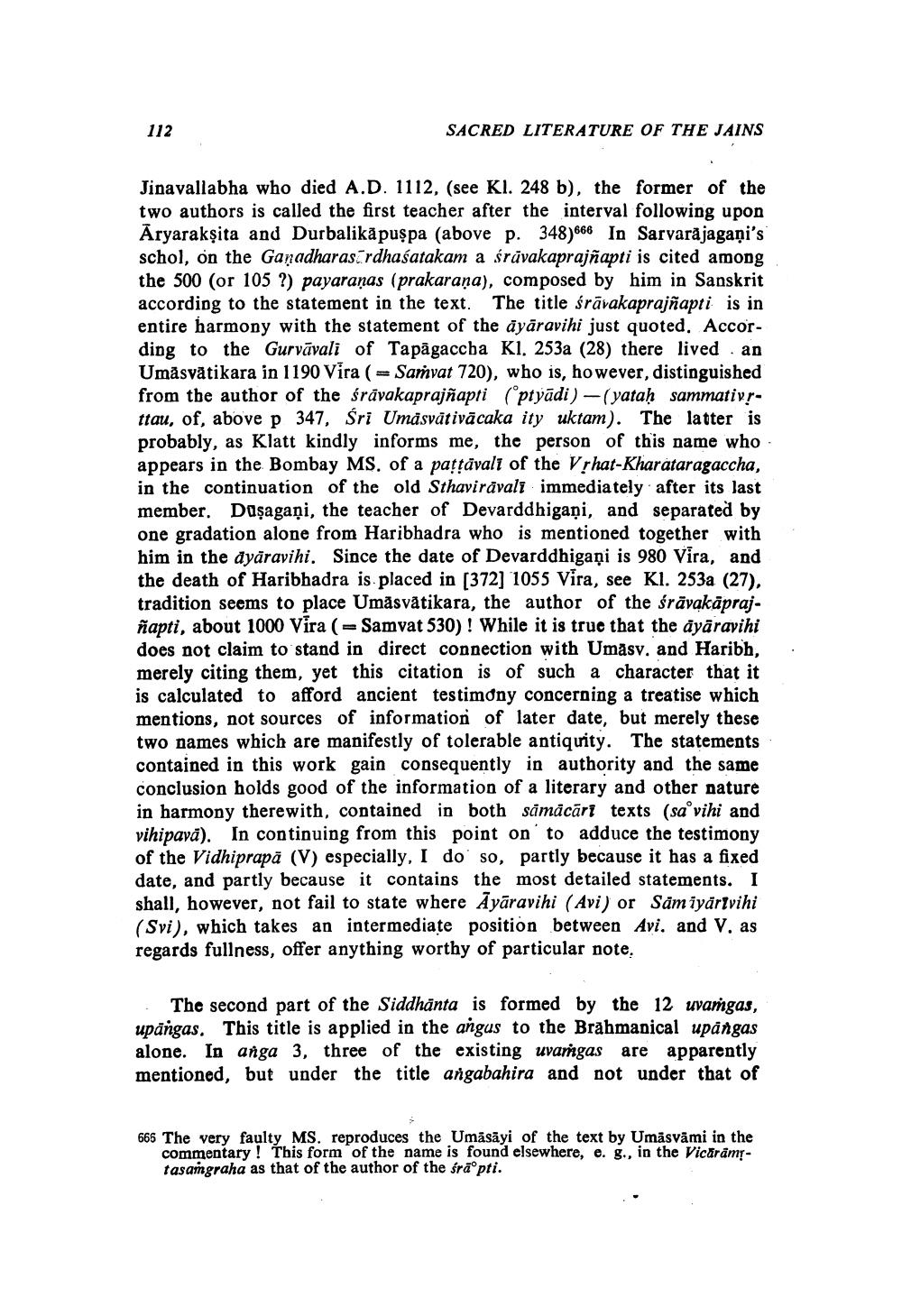________________
112
SACRED LITERATURE OF THE JAINS
Jinavallabha who died A.D. 1112, (see Kl. 248 b), the former of the two authors is called the first teacher after the interval following upon Āryarakṣita and Durbalikāpuşpa (above p. 348)666 In Sarvara jagani's schol, on the Ganadharasrdhasatakam a śrāvakaprajñapti is cited among the 500 (or 105 ?) payaraņas (prakaraņa), composed by him in Sanskrit according to the statement in the text. The title śrāvakaprajñapti is in entire harmony with the statement of the āyāravihi just quoted. According to the Gurvāvali of Tapāgaccba Kl. 253a (28) there lived an Umāsvātikara in 1190 Vira (= Samvat 720), who is, however, distinguished from the author of the śrāvakaprajñapti (optyādi) - (yataḥ sammativrttau, of, above p 347, Sri Umāsvātivācaka ity uktam). The latter is probably, as Klatt kindly informs me, the person of this name who appears in the Bombay MS. of a pattāvali of the Vrhat-Kharataragaccha, in the continuation of the old Sthaviravali immediately after its last member. Daşagaại, the teacher of Devarddhigaội, and separated by one gradation alone from Haribhadra who is mentioned together with him in the dyāravihi. Since the date of Devarddhigani is 980 Vira, and the death of Haribhadra is placed in [372] 1055 Vira, see Kl. 253a (27), tradition seems to place Umäsvätikara, the author of the śrāvakāprajñapti, about 1000 Vira (= Samvat 530)! While it is true that the ayāravihi does not claim to stand in direct connection with Umäsv. and Haribh, merely citing them, yet this citation is of such a character that it is calculated to afford ancient testimony concerning a treatise which mentions, not sources of information of later date, but merely these two names which are manifestly of tolerable antiquity. The statements contained in this work gain consequently in authority and the same conclusion holds good of the information of a literary and other nature in harmony therewith, contained in both sämācārī texts (sa vihi and vihipavā). In continuing from this point on to adduce the testimony of the Vidhiprapā (V) especially, I do so, partly because it has a fixed date, and partly because it contains the most detailed statements. I shall, however, not fail to state where Āyāravihi (Avi) or Samiyörivihi (Svi), which takes an intermediate position between Avi. and V. as regards fullness, offer anything worthy of particular note.
The second part of the Siddhānta is formed by the 12 uvařgas, upāngas. This title is applied in the angus to the Brahmanical upangas alone. In anga 3, three of the existing uvargas are apparently mentioned, but under the title angabahira and not under that of
666 The very faulty MS. reproduces the Umāsāyi of the text by Umäsvämi in the
commentary ! This form of the name is found elsewhere, e. g., in the Vicărämrtasañgraha as that of the author of the frā°pti.




